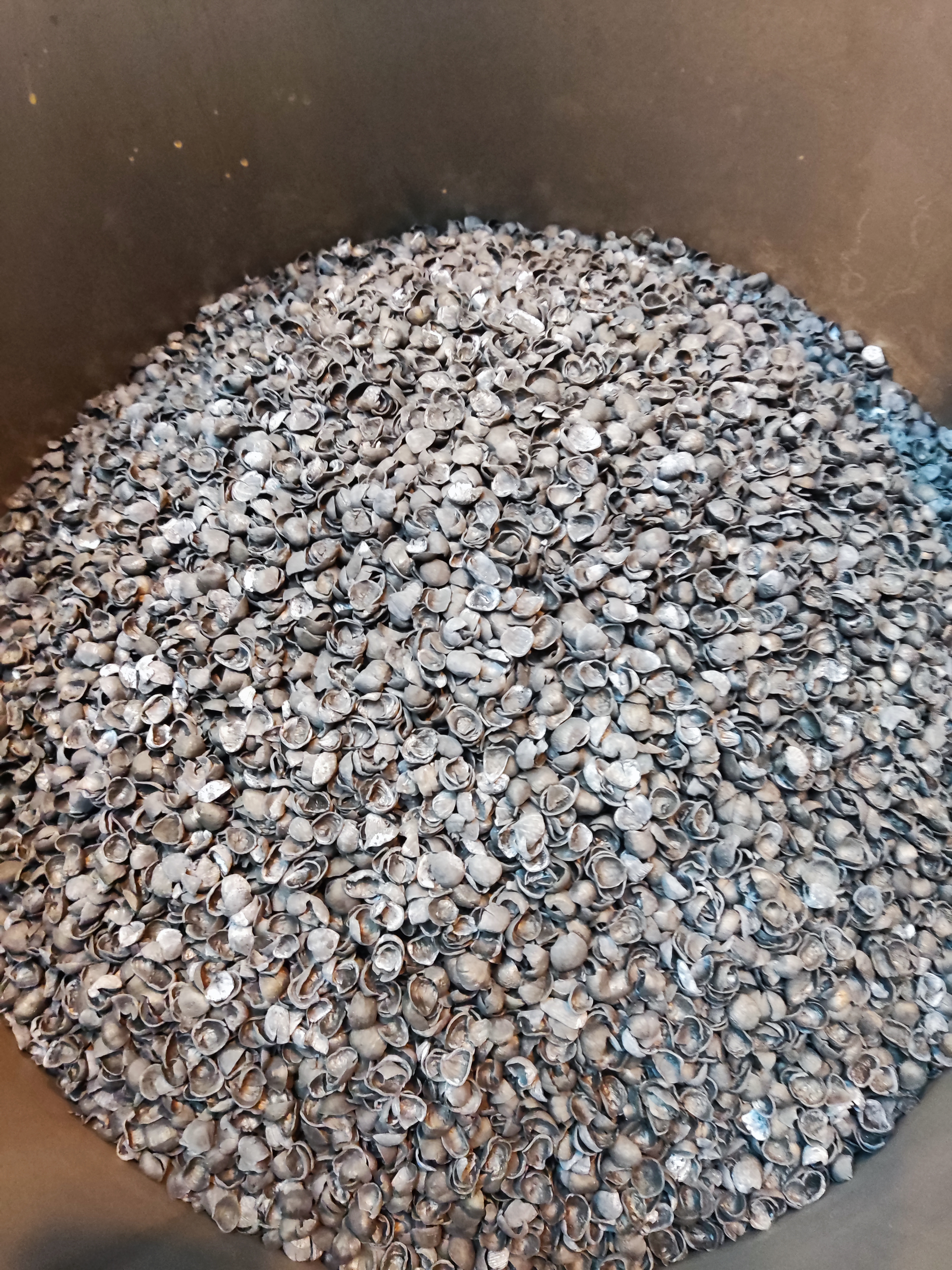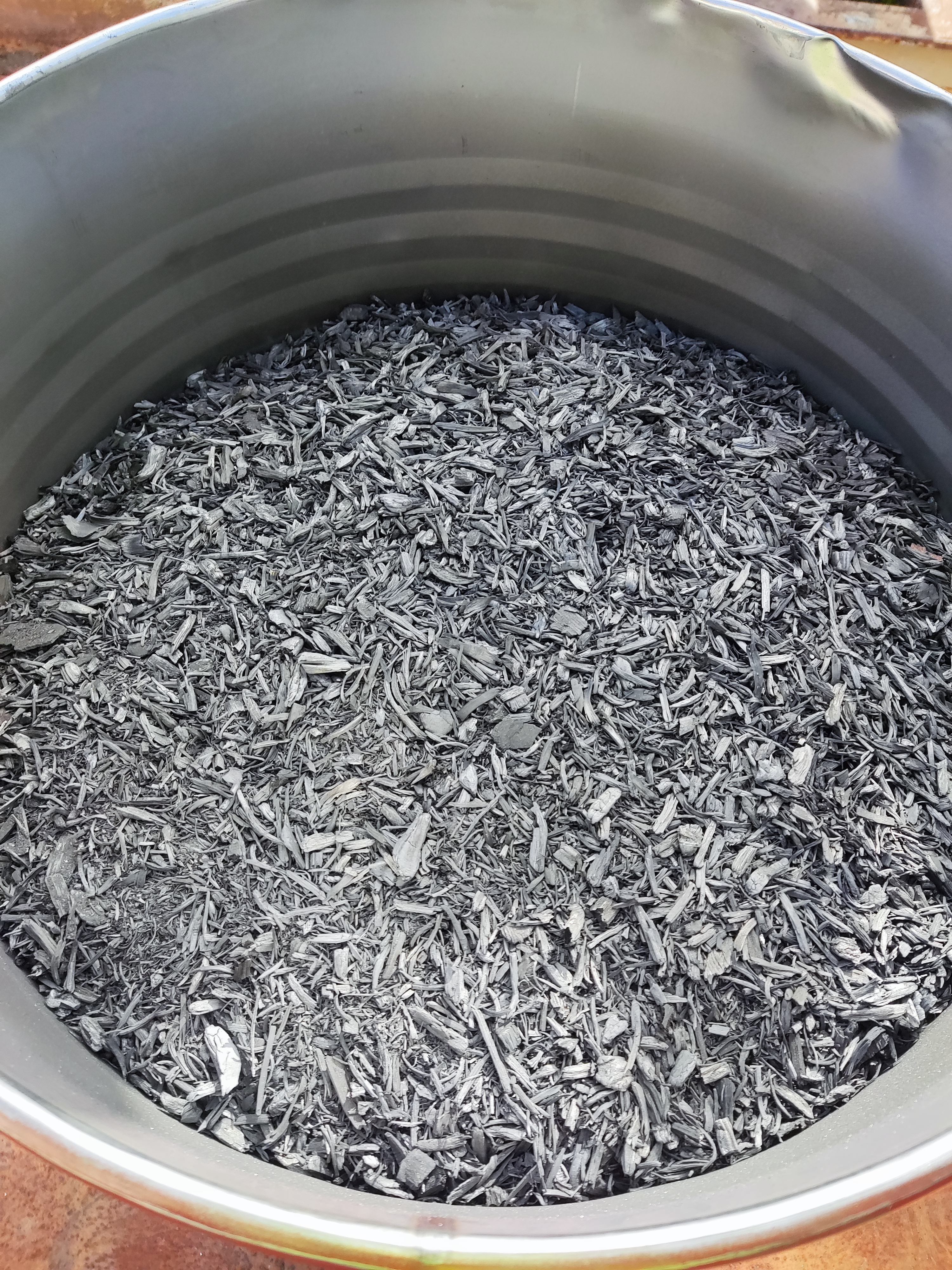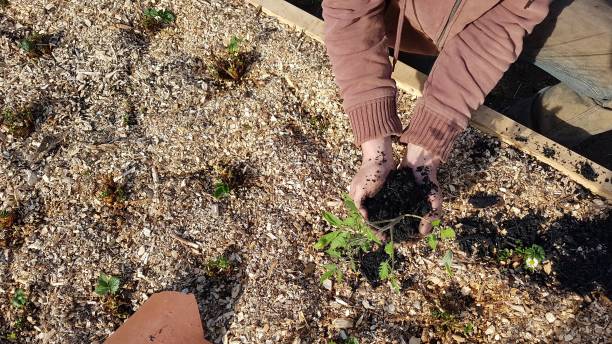Biochar is a porous carbonaceous charcoal-like compound that is produced from the thermal process of biomass material in the absence of oxygen, which is pyrolysis. Biochar is considered a solution for decarbonisation due to its ability to hold carbon for thousands of years.
On top of having the capability to hold carbon, the porous nature also allows for holding nutrients underground for the plantations.
Contact us to find out more.
Biochar is a porous carbon-containing compound produced from thermochemical conversion of organic materials, such as biomass, in an oxygen-depleted condition, such as pyrolysis. Biochar’s decomposition is slow in nature and is able to hold the carbon that would otherwise be released as carbon dioxide. This allows biochar to be utilised as a carbon sequestration method by burying it underground, potentially mitigating climate change.
Biochar can also be blended with fertiliser which will help to keep the soil fertile for a longer period. Due to the porous nature of the biochar, it is able to hold the nutrients for a longer time. Land that has been eroded could be recovered by laying down biochar to maintain its level.
Biochar produced from Anergy’s HTP process is of superior quality. The higher operating temperature allows for more vigorous reactions to occur on the surface of the biochar, potentially creating a more porous surface. Biochar from the HTP process will also have a lower volatile content, such that it is more stable in holding the carbon and at the same time, it will reduce the possibility of any reaction with the chemicals/bacteria in the soil that might disrupt its nitrogen dynamics.


Biochar offers a pathway towards decarbonisation. Due to its ability to hold carbon, that would otherwise be released as greenhouse gases such as carbon dioxide or methane, biochar can be utilised as carbon sequestration by burying it underground. Biochar also offers an improvement to the health of the soil. The biochar will help to hold the nutrients and water retention leading to an increased crop yield.
Biochar production can be certified for carbon removal credits which are increasingly being used by businesses to offset their carbon emissions in order to achieve a net zero or carbon negative target. Carbon credits are a growing market as businesses are aiming to be more sustainable by addressing their carbon footprints.

The traditional way of dealing with biomass waste include opening burning it in direct fire, or it can also be sent to a landfill.
Open burning in direct fire will create soot, due to incomplete combustion, which results in release of pollutants such as carbon monoxide and possibly SOx & NOx.
In landfill, the biomass wastes will decompose due to microbial activity. The decomposition process will release greenhouse gas, in particular methane, which contributes to climate change.
In addition, it will take up land and space in the landfill, which is increasingly sparse.
Production of biochar offers a way to reduce the environmental impact caused by the traditional ways of dealing with biomass wastes.
Cleaner emissions could be achieved as the pollutants produced from biochar production will be in significantly lesser amounts as compared to the direct burning of the biomass wastes.
Production of biochar also helps in waste management, reducing the volume of organic waste going into the landfills.
These organic wastes, that would otherwise decompose in landfill producing potent greenhouse gas in the form of methane, would be processed to produce biochar which releases cleaner emissions and the biochar can be utilised as carbon sequestration.
Anergy’s HTP will produce superior quality biochar that will contain less volatile contents (< 2%), such that the biochar will be more stable and will not self ignite when exposed to air.
The lower volatile content will also reduce the possibility of disrupting the nitrogen dynamics of the soil. The higher operating temperature of the HTP also encourages more reactions on the surface of the biochar, creating a more porous biochar surface which will help to retain nutrients in the soil.
The biochar may be further processed into activated carbon through steam activation to create further porosity which enables it to be used in other applications such as filters in water treatment and/or in the food industry.
Soil emissions from agriculturally drained lowland peat accounts for 3% of the total UK GHG emissions.
In order to be carbon negative farming practice, short rotation willows are utilised to produce biochar.
The biochar will be buried in the soil to improve the soil’s health and also to sequester the carbon.
The syngas (converted into electricity) and heat produced from the HTP process are utilised for the farming operation.
Read about our great work with Lapwing energy and how we have supported UK initiatives of decarbonizing the agriculture industry.
Biochar is effective in decarbonising the farming industry. The biochar produced from the pyrolysis of the biomass would be buried in the soil for the farms that will enhance the health of the soil which will improve the crop yield.
Besides biochar, the electricity and the heat that could be generated from the pyrolysis process could be utilised for the farming activities. This would replace the use of fossil fuels.
A circular economy can be achieved as the biomass wastes that would otherwise be disposed of and decompose, releasing greenhouse gases, will be used to generate electricity and heat to support the farming activities, which promote sustainability.
|
Biochar |
Charcoal |
Hydrochar |
Ash |
Soot |
|
For soil improvement and decarbonisation |
For heating purposes, not stable to hold carbon |
For heating purposes, not stable to hold carbon |
Leftover residue upon combustion of organic material |
Unburned carbon particles due to incomplete combustion |
|
Produced by Pyrolysis at ≥ 550oC |
Produced by Pyrolysis at about 400oC |
Produced by hydro thermal carbonization in which the process is done in the presence of heated water |
Present in all materials upon thermochemical process of any materials |
Produced by incomplete combustion most likely from direct burning |
|
Potential climate change mitigation through decarbonisation |
Release greenhouse gases upon combustion for its application contributing to climate change |
Release greenhouse gases upon combustion for its application contributing to climate change |
May contain toxic components potentially contaminating the soil and groundwater |
Release of greenhouse gases and may contain toxic & corrosive components |
Biochar is different from other similar products such as charcoal, hydrochar, ash and soot.
Charcoal is generally produced similar to biochar production through pyrolysis. The only difference is the operating temperature. Charcoal is produced in temperatures about 400oC. Whereas, biochar is produced in temperatures above 550oC.
The difference is the left-over volatile contents in the product. At lower temperature, higher volatile content is left and as such the general application of charcoal is for fuel whereby the volatile contents are oxidised to generate ignition & heat and further oxidised the carbon on the charcoal surfaces.
Biochar has less volatile contents in it, and as such it is stable enough to be buried underground without igniting when exposed to the air.
Hydrochar is produced from the hydro thermal carbonization process, i.e. heating in presence of water at lower temperature as compared to pyrolysis. Similar to charcoal, hydrochar has higher volatile content than biochar which makes hydrochar less stable and more likely to be used as fuel and not as carbon sequestration.
Ash is a residue left-over which is present in most materials upon combustion. It is mainly the incombustible inorganic content of the materials. Materials like glass, metal, rock, sand are referred to as ash. It has no benefit in the thermochemical process, in fact, its presence will reduce the efficiency of the process. It may contain toxic components, such as heavy metals, potentially contaminating soil and groundwater.
Soot, on the other hand, is unburned carbon particles formed due to incomplete combustion. It may also contain residual gas particles and inorganic compounds which may be toxic and corrosive when exposed to the air.